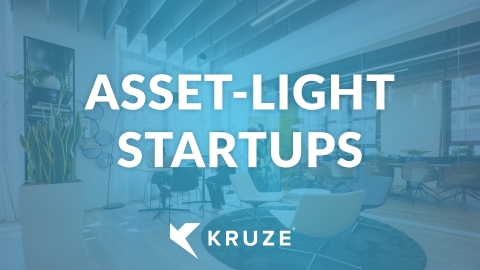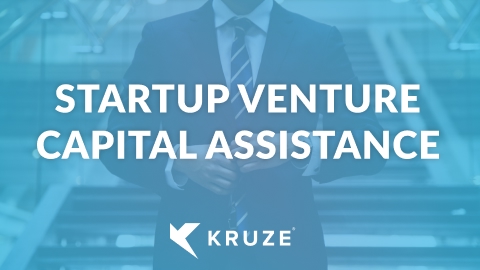
Zero cash date, also called cash out date, refers to the day a startup runs out of money. Founders, CEOs, CFOs, or really anyone associated with the company wants to make sure the company has plenty of cash and doesn’t hit the zero cash date. Company founders and the executive team should know what the cash out date is, and therefore should know how to calculate a zero cash date. Kruze Consulting provides free financial modeling templates to help startups build financial models, so if you don’t yet know yours download one of the model templates now to calculate it.
Why Founders Need to Know Their Cash Zero Date
It is crucial for companies to be aware of their zero cash date to prevent running out of their cash unexpectedly. Determining the zero cash date enables companies to ascertain the urgency with which they need to secure additional funding, initiate a credit line, or procure a business loan.
Investors need to understand when your company might require further funding - and they want to know it as soon as possible. Maintaining transparent communication forms the cornerstone of robust investor relationships. This involves keeping them informed about potential financial difficulties, allowing for collaborative solutions to emerge. In our experience, the number 1 reason founders get fired is that they run out of cash unexpectedly (or least, they surprise the investors with a seriously negative cash out look.) So don’t do that! Know when your startup runs of of juice, and do regular budget vs. actuals.
To Get to Cash Zero DAte Start with your burn rate
The first step in calculating your cash out date is calculating your burn rate. Your burn rate is the rate at which your company is spending cash over time and can be calculated on an accrual basis or a cash basis. It’s a good idea to look at both these burn rates. With accounting on an accrual basis, if you’ve billed someone for a product or service and they haven’t yet paid you, you have a receivable. And receivables can be recognized as revenue, even if you haven’t yet received the payment. In addition, you may also be accruing expenses for which you haven’t received an invoice, but you know you’re going to have to pay.
Generally speaking, for a venture capital backed company, the income statement should be based on accruals. Accruals might hide the fact that you have less cash on hand than you realize, and your cash out date could actually be coming sooner rather than later.
The cash basis burn, however, is straight off of your cash flow statement, and its typically net income with some adjustments in working capital like accounts payable and accounts receivable. You will also want to factor in any capital expenditures, such as large computer, server, or lab equipment purchases. The definition of cash basis burn rate is typically operating cash flow minus investment cash flow.
Calculate an average burn rate
You can calculate average burn rate on either a three- or six-month basis, and we do it both ways at Kruze Consulting. The argument for a six-month burn rate is that it “smooths out” some of the variables. For example, you may have one month in which sales were very good, or another month in which you had to buy a lot of equipment. A three-month average might not accurately reflect your burn rate.
On the other hand, a three-month average might more effectively capture recent events, which could be “diluted” by a six-month average. If your company hired a number of new employees in the last couple of months, that will increase your expenses going forward. Or if your revenue is rapidly trending up, this would influence the cash out date. A six-month average won’t necessarily reflect those costs accurately. No matter which method you settle on, once you have your burn rate, you’re ready to calculate a cash out date.
How to calculate your cash out date
To calculate your zero cash date, simply take your cash balance and divide it by your burn rate. The resulting number is how many months of cash you have left. The last day of that month is your cash out date. It’s very helpful for the executive team, founders, and venture capitalists to know this date. It’s one of the first things that you will be asked at every board meeting and every update.
However, that simplistic calculation may not work if your company is rapidly hiring, getting more customers/revenue or making major investments in infrastructure or G&A. If that’s the case, in order to calculate your cash out date you’ll want to build solid startup financial projections that anticipates all of the financial changes that are coming. Again, start with the actual cash balance and then use the model to project the change in your bank account balance at the end of every coming month. When you do this model, it helps to go quite a bit beyond your actual zero cash date so that you can make changes to the assumptions and see the impact.
Zero Cash Date vs Runway
Runway is a concept distinct from a zero cash date; it represents the amount of time a company has before it encounters a zero cash date. Both concepts are founded on projections that consider present and historical financial data. A clear understanding of runway allows financial teams to fine-tune monthly budgets proactively, aiding companies in averting an approach towards a zero cash date. We have an entire article on how to calculate runway.
Extending the zero cash date
There are a few ways that you can extend your cash out date:
- Customer prepays. Whenever you’re signing a customer, collecting that cash upfront is always a good idea. Often companies, especially in enterprise software companies, will incentivize their sales teams with higher commission rates on a cash paid up front. Pulling in that cash faster extends your cash out date.
- Venture debt. Venture debt can be used in addition to your equity fundraisers and give you another three to six months of runway before you reach your zero cash date.
- Bridge rounds. Also known as extension rounds, bridge rounds are another round of venture financing from the same investors that participated in the previous round. Companies in the seed stage may be starting to get traction, but don’t feel they might not get enough valuation with Series A funding. These companies may go to existing investors and ask if they would participate in an extension. In these instances, bridge rounds can delay the cash out date, and give startups more time to hit specific milestones, and the startup’s valuation at Series A could be higher than they otherwise might get. In other situations, the company may not be performing well, and in those cases, bridges are really bridges to a sale. Investors may extend the company’s runway, with the expectation that founders will try to sell the company before the zero cash date.
- Cutting expenses. Cutting expenses seems very simple, but sometimes it’s hard to see where those cuts can be made. If you can, work with a financial advisor like Kruze Consulting. But that is another way where you can extend your cash out date.
You Are Out of Cash Before the Cash Zero Date
Knowing when the bank account hits zero is important - but startups actually need to shut down before they literally run out of cash. This is because, depending on the jurisdiction in which they operate, they are often legally bound to settle outstanding obligations such as paying out Paid Time Off (PTO), taxes, and possibly severance, before completely running out of cash. Consequently, businesses might need to cease operations while still having some cash on hand to fulfill these legal requirements. Founders and directors may end up having personal financial obligations, so make sure you consult with your attorney and CPA if you are running low on funds.
However, there are scenarios where companies may operate below the threshold, mainly when VCs are committed to infusing more funds. In such cases, companies can strategically navigate through periods of low cash, relying on the impending financial support from their VCs. This approach allows them to manage their remaining cash efficiently while awaiting additional funding.
That said, operating below the cash threshold is laden with risks. If, for any reason, the anticipated funding from VCs does not materialize, the company can find itself in a precarious financial position, unable to meet its legal obligations, which can lead to severe legal and financial repercussions. For sure talk to your law firm if you are entering this danger zone!!
Therefore, while VC support can provide a safety net, it is imperative for startups to maintain prudent financial management practices and clear communication with their investors. This ensures that they are adequately prepared to navigate through financial uncertainties and can act promptly should any alterations in funding commitments occur.
Zero cash date is not something that everyone wants to talk about, but having a cash out date, knowing when it is, being realistic, and communicating that with your board and your executive team is helpful and important. It brings discipline and focus, letting you see what really matters and what’s going to move the needle in the short-term. If you have questions, contact us at kruzeconsulting.com.















